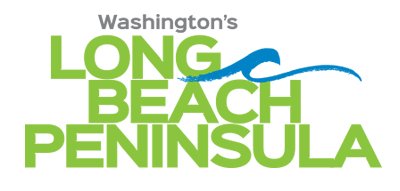The Long Beach Peninsula’s Rich History Comes Alive
In Its Many Alluring Attractions
For more than two centuries, the Long Beach Peninsula has drawn explorers with its diverse natural gifts and strategic seaside setting. As today’s travelers get acquainted with this vibrant destination, they find untold opportunities for enhancing the present by learning about the area’s provocative past.
Bordered to the south by the Columbia River, the region’s location played a key role in its unique history. Attracted by its ideal geography and rich resources, Chinook Indians settled here, followed by 18th-century European and American traders. In 1805, Lewis and Clark culminated their historic Voyage of Discovery on the peninsula, establishing its significance as the western edge of the new America, today commemorated by a new national park – the Lewis and Clark National and State Historical Park.
From the mid-19th century onward, the Long Beach Peninsula prospered with oyster farms. Hundreds of people called the town of Oysterville their home, and the Clamshell Railroad carried Willapa Bay bivalves to steamers for export. Further success sprouted with the cranberry industry, thanks to the area’s fertile growing conditions.
Visitors can learn more about these fascinating days gone by at a variety of Long Beach Peninsula attractions. Start with the interpretive center at Fort Columbia State Park – once a coastal defense fortification and now a heritage site – which includes thoughtful displays about Native American culture.
Renowned artist Maya Lin chose Cape Disappointment State Park for an installation of her groundbreaking Confluence Project, where landscape designs and integrated works of art pay moving tribute to the meeting of Native Americans and the Lewis and Clark team.
At the Lewis & Clark Interpretive Center, visitors can read entries from the original journals of the 19th-century explorers and ponder paintings, photographs and murals representing their landmark trek.
The partially paved eight-mile Discovery Trail, highlighted by interpretive markers, lets travelers trace Clark’s journey along the Pacific coastline, from Ilwaco to north Long Beach.
High waves, shifting sandbars and 200 shipwrecks have earned the waters off Cape Disappointment the nickname ‘The Graveyard of the Pacific.’ A visit to the Cape Disappointment Lighthouse and a short climb to the top of North Head Lighthouse underscore the need for these cliff-top sentinels which have been guiding ships for more than a century.
The restored buildings of Oysterville – now on the National Register of Historic Places – evoke tales of a thriving oyster industry, while the Willapa Bay Interpretive Center chronicles 150 years of oyster growing, complete with a 1920s dinghy.
The Columbia Pacific Heritage Museum, where four galleries span southwestern Washington history, adds perspective with a scale model of the peninsula circa 1920, complete with an original “Clamshell Railroad” passenger car.
The Cranberry Museum, with its ten-acre demonstration farm, discusses old and new methods of cultivating this colorful crop, particularly beautiful from mid-September through mid-October.
For displays with a playful bent, The World Kite Museum & Hall of Fame appeals to guests with its one-of-a-kind collection of 1,500 aerials from around the globe, located adjacent to sandy miles of kite-flying heaven.
When approaching the peninsula from the north, the Northwest Carriage Museum in Raymond delights with impeccably restored Victorian era carriages.
While the Long Beach Peninsula will always stand out for its surf, scenery and seafood, its captivating cultural heritage helps travelers appreciate it all the more.
